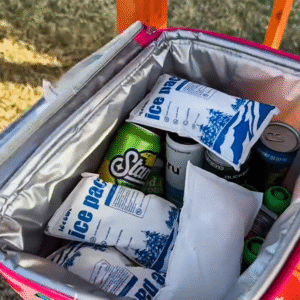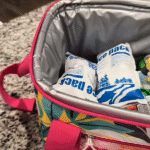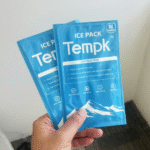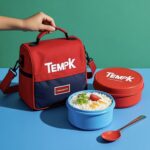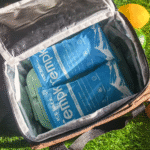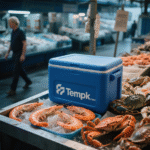How to Choose Cheap Dry Ice Packs in 2025
Introducción
If you ship temperature‑sensitive goods, cheap dry ice packs can protect quality without wrecking your budget. En 2025, you can lower total cold‑chain costs by 15–30% with smarter sizing, safer packouts, and better routing. This guide shows you how to match payloads with the right refrigerant, calculate duration, and control risk, using clear steps you can apply today.
-
Como cheap dry ice packs compare with gel packs for frozen shipping?
-
What size and quantity of cheap dry ice packs ¿Necesitas 24–72 horas??
-
Which packout designs cut leakage and burn‑off on long‑haul lanes?
-
How to handle safety, etiquetado, and IATA/OSHA compliance with dry ice?
-
Where do 2025 prices and supply trends land for cheap dry ice packs?
-
What practical tools help you pick cheap dry ice packs with confidence?
What are cheap dry ice packs best for?
Respuesta directa:
Cheap dry ice packs work best when you need sub‑zero conditions for 24–72 hours, especially for frozen foods and biologics. They maintain deep‑cold temperatures and tolerate delays better than water‑based gel packs. You still need the right insulation, ventilación, and moisture control. With correct sizing, cheap dry ice packs can stabilize payloads across zone‑skipping and cross‑border routes.
Explicación expandida:
Dry ice is solid carbon dioxide at about −78.5 °C. That cold bite creates strong temperature pull‑down and protects fragile goods through handoffs. Gel packs usually hold 0–8 °C or −20 °C phases, but they cannot mimic the freeze power of cheap dry ice packs on long legs. For seafood, helado, kits de comida, vacunas, y muestras de laboratorio, the sublimation buffer matters. En la práctica, you combine cheap dry ice packs with vapor barriers and absorbents to manage frost and condensation. For airline segments, use breathable vents and follow the carrier’s dry‑ice limits.
Cheap dry ice packs for frozen food shipping
Detalles:
Comidas congeladas, helado, and meat tolerate minor thermal swings but fail if thawed and refrozen. For these loads, cheap dry ice packs outperform gel by giving colder headroom. A common approach is a sandwich: aislamiento, transatlántico, cheap dry ice packs, carga útil, another layer of packs, then dunnage to prevent movement. Duration depends on insulation R‑value, lane temperature, and pack mass. Build a margin for the hottest leg and add 10–15% extra dry ice for uncertainty.
| Ship Type | Typical Payload | Pack Mass (Starter) | Lo que significa para ti |
|---|---|---|---|
| Frozen meal kit | 4–6 kg | 4–6 kg cheap dry ice packs | 48 hours door‑to‑door in summer routes |
| Premium ice cream | 2–3 kg | 3–5 kg cheap dry ice packs | Firmer texture and fewer melt marks |
| Filetes de mariscos | 5–8 kg | 5–8 kg cheap dry ice packs | Longer shelf life and safer transit |
Consejos prácticos y sugerencias.
-
Hot lanes: Agregar 20% cheap dry ice packs for hubs above 30 °C.
-
Tight cartons: Minimize headspace so cold air doesn’t escape quickly.
-
Double bagging: Use vapor‑barrier liners to reduce moisture and frost.
Caso del mundo real: A regional meal‑kit brand swapped mixed gel packs for cheap dry ice packs en verano. With the same shipper, on‑time deliveries improved and spoilage fell by half across 48‑hour zones.
How to size cheap dry ice packs for your route?
Respuesta directa:
Start with payload mass, target temperature, insulation R‑value, and lane duration. Then calculate sublimation needed plus a buffer. For two‑day routes, many frozen food boxes need cheap dry ice packs equal to 60–100% of payload mass. For biotech, use validated packouts and documented test data to satisfy QA.
Explicación expandida:
Sizing balances heat gain against sublimation. Your box absorbs ambient heat through walls, seams, and air exchange. Cheap dry ice packs remove that heat as they turn from solid to gas. Colder isn’t always cheaper: oversizing adds cost and weight. En cambio, reduce heat gain with better insulation and correct placement. Run small pilots in your hottest corridor, then standardize the winning packout.
Bulk cheap dry ice packs: wholesale cost drivers
Detalles:
Your unit price depends on order size, slab thickness, pre‑cut bricks vs pellets, seasonality, and last‑mile availability. Comprar cheap dry ice packs in bulk with standing allocations helps in peak holidays. Factor dry‑ice burn‑off in storage. Use insulated bins and limit door openings to preserve inventory.
| Driver | Rango típico | Effect on Cost | Tu beneficio |
|---|---|---|---|
| Order size | 50–1,000+ kg | Larger orders lower unit price | Lock in weekly allocations |
| Factor de forma | Bricks vs pellets | Bricks cost a bit more, durar más | Better packout stability |
| Seasonality | Summer peaks | Prices rise with demand | Pre‑buy and cold‑store |
| Delivery window | Same‑day vs 24‑48h | Rush adds fees | Schedule recurring drops |
Packout examples using cheap dry ice packs
-
48‑hour frozen meal kit: 5 KG Payload, EPS 1.5″, lane avg 28 °C → 5–6 kg cheap dry ice packs.
-
72‑hour ice cream sampler: 2.5 KG Payload, Revestimiento, lane avg 32 °C → 4–5 kg cheap dry ice packs.
-
24‑hour seafood courier: 6 KG Payload, EPS 1″, tempered truck → 4–5 kg cheap dry ice packs.
Quick calculator (pseudo‑code):
Cheap dry ice packs vs gel ice packs: which wins?
Respuesta directa:
For frozen payloads and long legs, cheap dry ice packs usually win. Para enfriar (2–8 ° C) payloads, gel or PCM wins. Mixed packouts can stabilize transitions and reduce cost, but validate first.
Explicación expandida:
Gel packs and PCMs are water‑based and hold temperatures around their phase point. They’re excellent for vaccines, lácteos, y producir. Cheap dry ice packs deliver colder temperatures, wider safety margins, and quicker pull‑down. A hybrid design may use a small layer of cheap dry ice packs beneath PCM to handle heat spikes without over‑cooling.
When gel packs beat cheap dry ice packs
-
Regulated chill: 2–8 °C biologics prefer PCM at 5 °C to avoid freezing.
-
Corto, rutas locales: Same‑day Metro delivery often favors gel packs.
-
Reusability goals: Reusable PCM bricks fit circular programs better than cheap dry ice packs.
Safety and storage for cheap dry ice packs
Respuesta directa:
Cheap dry ice packs require gloves, ventilación, y etiquetado. Do not store in airtight containers. Train staff to handle CO₂ gas safely and to avoid bare‑skin contact. Para envíos aéreos, follow airline dry‑ice limits and declare contents.
Explicación expandida:
Dry ice displaces oxygen as it sublimates. Keep rooms ventilated and alarms calibrated where needed. Use rigid coolers or lined shippers that vent gas. Para devoluciones, instruct customers on safe unboxing. Label as “Carbon dioxide, solid” with net mass on the outer carton. Para el aire, follow IATA guidance (Huuum934) and carrier policies. OSHA guidance supports ventilation and training in enclosed work areas.
Labeling and compliance for cheap dry ice packs
-
Calificación: "Dióxido de carbono, sólido (hielo seco)” and net kg on the outer box.
-
Documentación: Include refrigerant mass in ship papers for air legs.
-
Capacitación: Provide annual refreshers for handlers using cheap dry ice packs.
Interactive chooser: cheap dry ice packs or gel?
Use this 60‑second decision helper.
-
Temperatura objetivo:
-
Below −10 °C → choose cheap dry ice packs.
-
2–8 °C → choose gel/PCM.
-
-
Duración:
-
36 hours or uncertain → bias to cheap dry ice packs.
-
<24 horas, controlled route → gel/PCM may be cheaper.
-
-
Payload sensitivity:
-
Freezing risk present → avoid direct contact with cheap dry ice packs; use PCM buffer.
-
-
Sustainability goals:
-
Reuse loops → prioritize PCM and insulated totes.
-
One‑way e‑commerce → cheap dry ice packs reduce melt risk and waste.
-
2025 developments and trends in cheap dry ice packs
Descripción general de la tendencia:
En 2025, shippers push for lighter, smarter packouts that use fewer cheap dry ice packs without raising risk. VIP and aerogel liners appear in mid‑market kits, cutting heat gain by half compared with standard foam. Carriers tighten hazard declarations, so accurate mass labeling is now routine. Data loggers and route analytics reduce over‑packing and stabilize claims.
Último de un vistazo
-
Smarter insulation: Better liners mean fewer cheap dry ice packs por la misma duración.
-
Lane analytics: AI route scoring rightsizes cheap dry ice packs for summer peaks.
-
Supplier diversity: More regional producers reduce shortages and smooth prices.
Ideas del mercado:
Wholesale pricing remains seasonal, peaking in summer and holidays. Pallet‑level buys of cheap dry ice packs with fixed weekly drops keep costs predictable. Mixed packouts are rising, where small layers of cheap dry ice packs supplement PCM to handle spikes during handoffs and depot dwell.
Preguntas frecuentes
Q1: How long do cheap dry ice packs last in transit?
Most shipments see 24–72 hours when sized correctly. Use better insulation and test your hottest route. Add 10–20% cheap dry ice packs as a safety margin.
Q2: Are cheap dry ice packs safe for food shipments?
Sí, with liners and ventilation. Keep packs out of direct contact with unwrapped food. Train receivers to handle gas and use gloves.
Q3: How many cheap dry ice packs do I need for ice cream?
For 2–3 kg payloads over 48 horas, start with 3–5 kg cheap dry ice packs. Validate with a test box on your lane.
Q4: Can I reuse cheap dry ice packs?
No. They sublimate. If reuse is a must, consider PCM or gel systems for your chilled lanes.
Q5: What if my courier delays the box?
Build in buffer mass for cheap dry ice packs and use insulation with higher R‑values. Add a data logger to confirm compliance.
Q6: Do I need special labels for cheap dry ice packs?
Sí. Mark “Carbon dioxide, solid” and the net mass. Follow airline and carrier rules on maximum dry‑ice weight per parcel.
Resumen y recomendaciones
Control de llave:
Usar cheap dry ice packs when you need deep‑cold resilience for 24–72 hours. Size by payload, aislamiento, lane heat, and desired margin. Improve insulation first; then dial pack mass. For chilled goods, gel or PCM often beats cheap dry ice packs. Train teams on safety, etiquetado, and returns to cut risk.
Plan de acción:
Run a three‑box validation on your hottest corridor. Compare two insulation levels and two mass settings of cheap dry ice packs. Log temperatures. Lock in a weekly allocation with your supplier and standardize the best packout. Need help designing or testing? Talk with our team and get a lane‑specific sizing sheet.
Acerca de Tempk
Quienes somos:
Tempk builds practical, data‑driven cold‑chain solutions for e‑commerce brands, cargadores de comida, and life‑science teams. We validate packouts in environmental chambers, then tune them to real‑world lanes. Our designs reduce refrigerant use while protecting quality, con 95% on‑time temperature compliance across pilots.
Llamado a la acción:
Ready to standardize a packout or switch to cheap dry ice packs esta temporada? Contact Tempk for a lane audit and a validated sizing guide.






